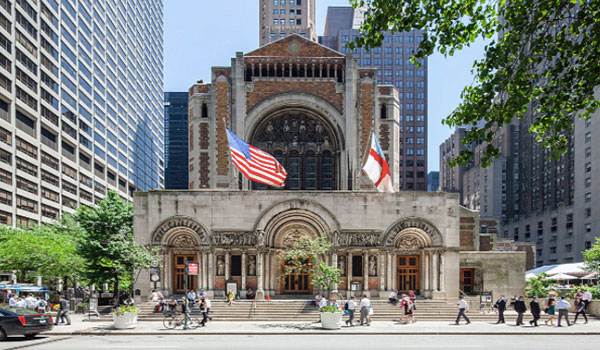
Our Mission
St. Bartholomew’s Conservancy, an independent, 501(c)(3) nonprofit organization, was established for the purpose of helping fund the restoration and preservation of the architecturally and historically significant site that is St. Bartholomew’s Church and Community House -- a celebrated New York City landmark and cherished destination for visitors from across the country and around the world.
The Conservancy is dedicated to raising public and private funds for the site’s much-needed restoration and preservation. Our focus on its renowned landmark exteriors includes the signature Great Dome, terra cotta roofing, once colorful facades, stained glass windows, and myriad ornamental friezes and sculptures by celebrated American artists. By helping bring these remarkable architectural features back to life, the Conservancy also seeks to heighten public awareness of the importance of preserving historic buildings and open space in densely populated urban areas.
Recognized the world over for its masterful integration of architecture and art, construction of St. Bartholomew’s Church and Community House began in 1916 and was completed in 1930. Romanesque in form with rich Byzantine decoration, the Church and its complementary Community House sit astride a full block of Park Avenue between 50th and 51st Streets in midtown Manhattan. So situated, they create an unexpected oasis in the midst of a dense corridor of soaring office towers. The site was designated a New York City landmark in 1967, listed on the National Register of Historic Places in 1980, and as of October 31, 2016, is a National Historic Landmark (NHL).
Read the Conservancy's NHL nomination of St. Bartholomew's Church and Community House.
St. Bartholomew's welcomes tens of thousands of visitors from across the country and around the world. It is not only home to a vibrant religious community, but also a highly regarded community center offering outstanding cultural, artistic, and educational programs, athletic and entertainment facilities, and vital social services. Unfortunately, the age of its historic buildings, compounded by the effects of deferred maintenance during years of financial hardship, significant water penetration, and air pollution have now created a critical need for restoration and preservation.

